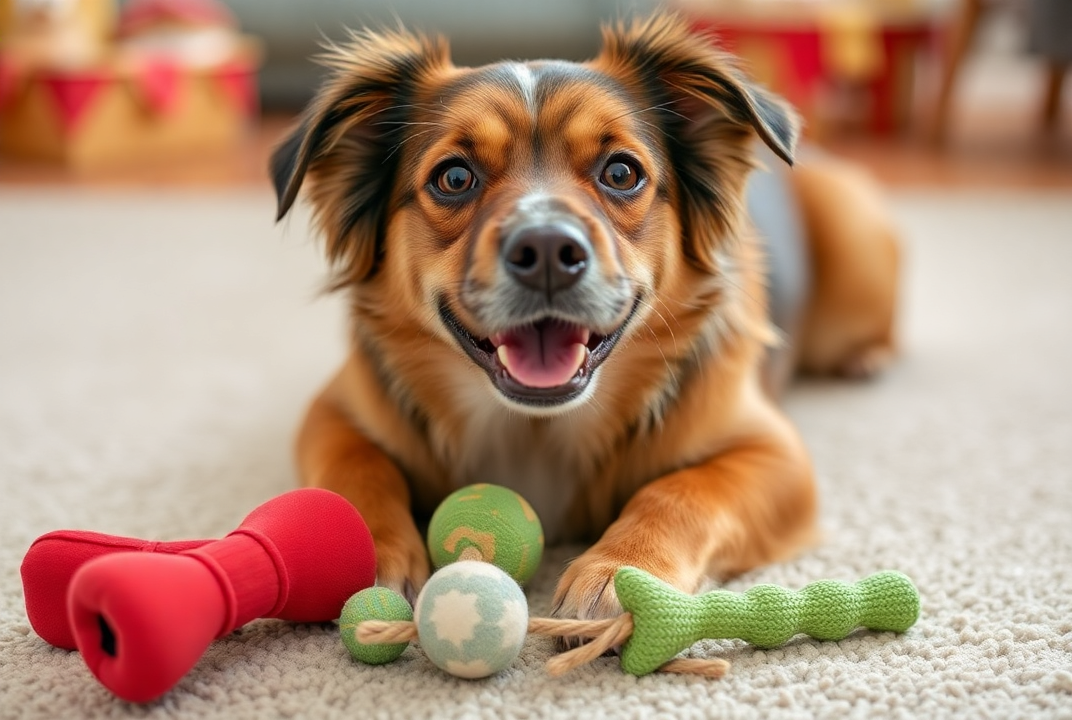
Dog toys are not just fun accessories—they play a crucial role in your furry friend’s overall well-being. The right toy can keep your dog entertained, mentally stimulated, and physically active while also strengthening the bond between you and your pet. However, with countless options available in the market, finding the perfect toy can feel overwhelming. This guide will help you choose the ideal toy for your dog based on their needs, preferences, and safety.
—
Why Are Dog Toys Important?
Before diving into the selection process, let’s understand why toys are essential for dogs:
1. Mental Stimulation: Toys help combat boredom and prevent destructive behavior by keeping your dog’s mind engaged.
2. Physical Exercise: Playing with toys encourages movement and keeps your dog active, which is vital for their health.
3. Dental Health: Chewing toys can help clean your dog’s teeth and massage their gums.
4. Bonding: Interactive toys, like tug ropes or fetch balls, allow you to spend quality time with your pet.
5. Stress Relief: Toys provide comfort and help reduce anxiety, especially in dogs that spend time alone.
—
Factors to Consider When Choosing a Dog Toy
1. Size Matters
Choose a toy that is appropriate for your dog’s size.
– A toy that is too small may pose a choking hazard, especially for larger breeds.
– A toy that is too big may be difficult for smaller dogs to play with.
Ensure the toy is large enough that your dog cannot accidentally swallow it but small enough for them to carry and enjoy.
—
2. Durability
Durability is especially important for aggressive chewers.
– Tough Chewers: Look for toys made of strong rubber, nylon, or durable materials that can withstand heavy chewing.
– Light Chewers: Softer toys made of plush or fabric may work for dogs that are gentle with their toys.
Always check for wear and tear to prevent your dog from ingesting broken pieces.
—
3. Your Dog’s Age
The age of your dog will influence the type of toy they need:
– Puppies: Look for soft chew toys designed to soothe teething pain.
– Adult Dogs: Choose toys that cater to their energy levels and play style, such as fetch balls or tug ropes.
– Senior Dogs: Older dogs may prefer softer toys that are gentle on their teeth and gums.
—
4. Your Dog’s Play Style
Dogs have different play preferences, so it’s essential to choose a toy that matches their personality:
– Fetchers: Dogs that love to run and chase will enjoy balls, frisbees, or other throw-and-fetch toys.
– Chewers: Durable chew toys like rubber bones or flavored sticks are ideal for dogs that love to chew.
– Tuggers: For dogs that enjoy tug-of-war, look for strong rope toys or toys with handles.
– Problem-Solvers: Puzzle toys or treat-dispensing toys are perfect for intelligent dogs that enjoy mental challenges.
—
5. Safety First
Your dog’s safety is paramount when choosing a toy:
– Non-Toxic Materials: Ensure the toy is made from pet-safe, non-toxic materials.
– Avoid Sharp Edges: Check for any sharp parts that could injure your dog.
– No Small Parts: Avoid toys with small pieces that can be swallowed.
– Supervised Play: Always supervise your dog when introducing a new toy to monitor how they interact with it.
—
Types of Dog Toys and Their Benefits
1. Chew Toys
– Purpose: Satisfy your dog’s natural chewing instincts, promote dental health, and relieve stress.
– Examples: Rubber bones, nylon chews, flavored chew toys.
2. Interactive Toys
– Purpose: Keep your dog mentally stimulated and engaged.
– Examples: Puzzle toys, treat-dispensing toys, hide-and-seek toys.
3. Fetch Toys
– Purpose: Encourage physical exercise and playtime with you.
– Examples: Balls, frisbees, stick toys.
4. Plush Toys
– Purpose: Provide comfort and companionship, especially for dogs that like to cuddle.
– Examples: Soft stuffed animals or squeaky toys.
5. Rope Toys
– Purpose: Great for tug-of-war games and dental health (cleaning teeth as they chew).
– Examples: Braided ropes, knotted tug toys.
—
Tips for Choosing the Right Toy
– Experiment with Different Toys: Dogs can have unique preferences, so try a variety of toys to discover what your dog loves the most.
– Rotate Toys: To keep your dog interested, rotate their toys every few days instead of giving them access to all toys at once.
– Watch for Allergies: If your dog shows signs of an allergy to a toy (e.g., itching, chewing paws), discontinue its use and consult a vet.
—
Signs of a Good Dog Toy
A good dog toy should be:
1. Safe and durable.
2. Engaging and suitable for your dog’s play style.
3. Easy to clean and maintain.
—
Conclusion
Choosing the perfect dog toy isn’t just about fun—it’s about ensuring your dog’s mental and physical well-being. By considering factors like size, durability, and your dog’s unique preferences, you can find toys that provide hours of entertainment, exercise, and comfort. Remember, toys are more than just objects; they’re tools that help build a stronger bond between you and your furry friend.
So, take the time to find the right toy, and watch your dog’s tail wag with joy! Happy playing!
